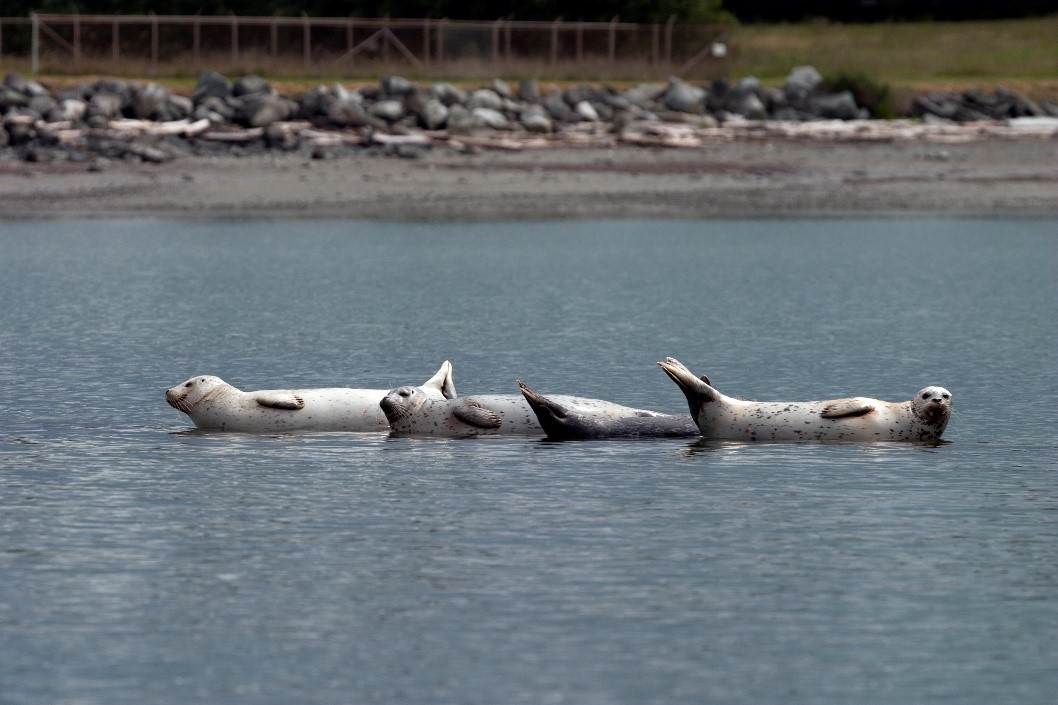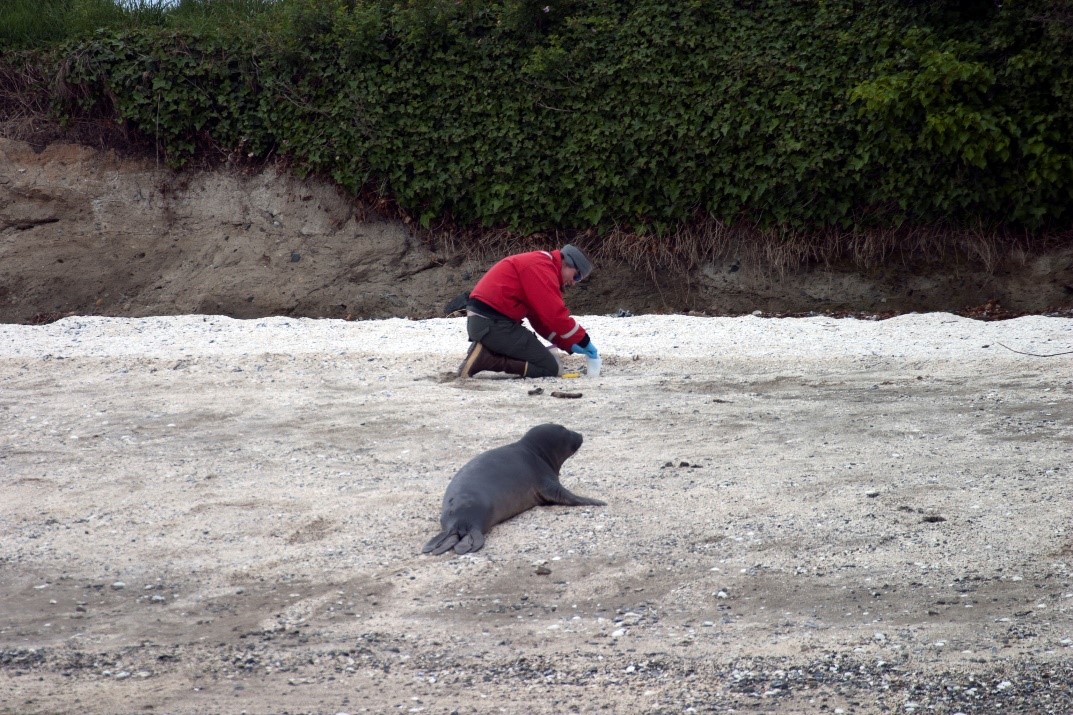August 2016
New graduate student
Madelyn Voelker, graduate student
8 August 2016
I am Alejandro’s newest graduate student. I will be officially starting as a student at Western this fall quarter. However, I was lucky enough to start field work for my thesis this past spring. This spring myself, Alejandro, and a number of excellent volunteers (I’d specifically like to mention Felipe and Christa who spent a ton of time helping me) collected harbor seal scat in the Whidbey Basin. The Whidbey Basin encompasses the waters between the east side of Whidbey Island and the mainland, from Deception Pass south to Everett. The funding to conduct this field work came from Long Live The Kings as part of the Salish Marine Survival Project. The collected scat will be analyzed for individual seal DNA as well as prey hard parts and prey DNA. These data will help inform questions about harbor seal impact on salmon populations in the Salish Sea. I also got in contact with Ocean Research College Academy, out of Everett Community College. We are working together to have the scat tested for microplastics. The analysis for microplastics got underway this week so hopefully I will have more to say about that in the coming months.
The field season was a lot of fun and an excellent learning experience. We started collections the third week of March. The season started off with a number of hiccups in boat operation and collection success. For example, the first five collection trips we had an impressive average of about one scat collected per trip! We also spent a couple days trying to get the boat-engine-over-heating issue fixed. However, we persevered, learned from our mistakes, got a good mechanic, and ended the season with about 400 samples from five different sites. A few key things we learned were when in the tide cycle to visit each site, where at each site to look, and ways to identify seal scat. Turns out the quickest and easiest way to pick out seal scat from rocks, mud, other scat, and anything else that might be mistaken as seal scat, is smell. Seal scat has a very unique aroma.

Harbor seals on a log boom at Oak Harbor Marina. If more than two seals were on the log at the same time it would become submerged. This wasn’t helpful to our cause, but it was cool to see them up close. Photo by Alejandro Acevedo.

Collecting scat at the most productive of the haul out sites, with the resident northern elephant seal. Photo by Alejandro Acevedo.
With the help of a few volunteers (thank you Kayla, Lindsey, and Felipe!) I was also able to start processing some of the samples for prey DNA and prey hard parts. This process involves thawing the frozen samples in ethanol and stirring them through paint strainers to create a DNA-ethanol slurry and separate out the prey hard parts. We were only able to get through 60 of about 400 samples so this effort will be continued in the fall.
Once the prey DNA has been extracted, and the hard parts separated out from all of the samples, they will hopefully be analyzed for species content. That analysis, as is a second field season, is dependent on receiving additional funding from Long Live The Kings. Alejandro is meeting with them later this month so I will hopefully know more about that by the end of August.
I am really excited to be a part of the Marine Mammal Ecology lab. In the short amount of time I’ve spent at Western I have already met and been helped by a lot of wonderful people. I am looking forward to being there full time!